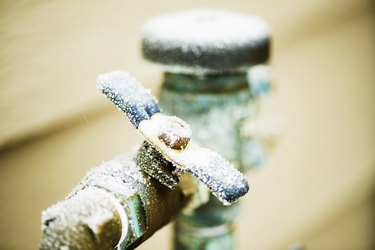Protecting Against Frozen Plumbing: Best Strategies for Cold Weather
Protecting Against Frozen Plumbing: Best Strategies for Cold Weather
Blog Article
What are your thoughts on Prevent Frozen Pipes ?

Cold weather can ruin your plumbing, particularly by freezing pipes. Below's exactly how to stop it from occurring and what to do if it does.
Intro
As temperatures decrease, the threat of frozen pipes rises, potentially resulting in pricey repairs and water damage. Comprehending just how to stop frozen pipelines is important for property owners in cold environments.
Recognizing Icy Pipes
What creates pipes to freeze?
Pipelines ice up when revealed to temperature levels listed below 32 ° F (0 ° C) for extended periods. As water inside the pipelines ices up, it broadens, taxing the pipeline walls and potentially triggering them to burst.
Risks and problems
Frozen pipes can lead to supply of water disruptions, home damage, and pricey repair work. Ruptured pipes can flooding homes and cause considerable structural damages.
Signs of Frozen Water Lines
Identifying frozen pipelines early can stop them from bursting.
Exactly how to recognize icy pipes
Try to find lowered water circulation from faucets, unusual odors or noises from pipes, and noticeable frost on revealed pipelines.
Avoidance Tips
Insulating vulnerable pipes
Wrap pipes in insulation sleeves or use heat tape to safeguard them from freezing temperatures. Focus on pipelines in unheated or outside locations of the home.
Heating methods
Maintain indoor rooms properly heated, especially locations with pipes. Open closet doors to enable warm air to flow around pipelines under sinks.
Safeguarding Exterior Plumbing
Yard pipes and outdoor taps
Disconnect and drain pipes garden hoses before winter. Set up frost-proof faucets or cover outdoor faucets with shielded caps.
What to Do If Your Pipes Freeze
Immediate actions to take
If you believe frozen pipes, maintain taps available to soothe pressure as the ice melts. Utilize a hairdryer or towels taken in warm water to thaw pipelines gradually.
Long-Term Solutions
Structural adjustments
Think about rerouting pipes away from exterior walls or unheated areas. Add extra insulation to attics, basements, and crawl spaces.
Updating insulation
Buy high-quality insulation for pipelines, attic rooms, and wall surfaces. Appropriate insulation helps maintain regular temperature levels and minimizes the danger of icy pipes.
Conclusion
Preventing icy pipelines needs aggressive steps and quick feedbacks. By comprehending the causes, indicators, and preventive measures, homeowners can secure their plumbing during cold weather.
5 Ways to Prevent Frozen Pipes
Drain Outdoor Faucets and Disconnect Hoses
First, close the shut-off valve that controls the flow of water in the pipe to your outdoor faucet. Then, head outside to disconnect and drain your hose and open the outdoor faucet to allow the water to completely drain out of the line. Turn off the faucet when done. Finally, head back to the shut-off valve and drain the remaining water inside the pipe into a bucket or container. Additionally, if you have a home irrigation system, you should consider hiring an expert to clear the system of water each year.
Insulate Pipes
One of the best and most cost-effective methods for preventing frozen water pipes is to wrap your pipes with insulation. This is especially important for areas in your home that aren’t exposed to heat, such as an attic. We suggest using foam sleeves, which can typically be found at your local hardware store.
Keep Heat Running at 65
Your pipes are located inside your walls, and the temperature there is much colder than the rest of the house. To prevent your pipes from freezing, The Insurance Information Institute suggests that you keep your home heated to at least 65 degrees, even when traveling. You may want to invest in smart devices that can keep an eye on the temperature in your home while you’re away.
Leave Water Dripping
Moving water — even a small trickle — can prevent ice from forming inside your pipes. When freezing temps are imminent, start a drip of water from all faucets that serve exposed pipes. Leaving a few faucets running will also help relieve pressure inside the pipes and help prevent a rupture if the water inside freezes.
Open Cupboard Doors
Warm your kitchen and bathroom pipes by opening cupboards and vanities. You should also leave your interior doors ajar to help warm air circulate evenly throughout your home.

As a fervent reader about Helpful Tips to Prevent Frozen Pipes this Winter, I think sharing that portion was smart. In case you enjoyed our page if you please remember to pass it around. Thanks for being here. Revisit us soon.
Call Today Report this page